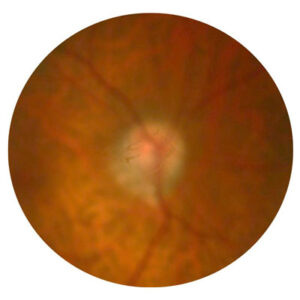Glaucoma
February 2010
by Tony Realini, M.D.
Do topical steroids raise blood glucose? Does insulin lower IOP?
It is well established that systemically applied medications can affect ocular health and that topically applied eye drop medications can impact systemic health. Examples include the bulls-eye maculopathy occasionally seen in patients receiving hydroxychloroquine (Plaquenil, Sanofi-Aventis, Bridgewater, N.J.) for rheumatoid arthritis, as well as the symptoms of systemic beta-blockade seen in some patients receiving topical beta-blockers for glaucoma management.
At the 2009 meeting of the American Academy of Ophthalmology in San Francisco, researchers presented new data on a pair of controversial drug-disease interactions. One group investigated whether topical corticosteroid eye drops could significantly alter blood glucose levels in people with diabetes, while a second group explored the effects of insulin therapy on IOP.
Topical steroids and blood glucose
The ability of systemically administered corticosteroids to raise blood glucose levels is well known. Less well established is whether topical steroid eye drops can achieve high enough systemic concentrations to affect blood glucose levels.
To address this clinical research question, Irit Bahar, M.D., and colleagues at Barzilai Medical Center, Ashkelon, Israel, conducted a retrospective chart review of over 44,000 medical records of diabetic patients. To simplify this effort, the research team utilized the electronic medical record database of the largest health maintenance organization in Israel.
Over nearly a decade, from January 1998 through July 2006, Dr. Bahar and coworkers identified 44,118 prescriptions for steroid eye drops received by patients with diabetes within the health care system. To ensure an adequate duration of exposure to the topical steroids, only diabetics who filled a minimum of three consecutive monthly prescriptions (2,697 patients) were included in the analysis.
“Both fasting blood glucose and hemoglobin A1c levels increased significantly during topical steroid therapy,” said Dr. Bahar. From the two weeks preceding the initiation of topical steroid therapy to the two weeks following initiation of therapy, the distributions of both fasting blood glucose and hemoglobin A1c shifted significantly to the right, toward higher values.
Overall, fasting blood glucose rose from a mean pre-treatment level of approximately 145 units to a peak of approximately 155 units during eight weeks of topical steroid therapy, said Dr. Bahar. Additionally, hemoglobin A1c rose from approximately 7.6% to approximately 8.2% over the same time frame.
“The use of topical steroid eye drop medications by diabetics seems to interfere with glycemic control,” Dr. Bahar concluded. “Clinicians should be alerted to this risk and may initiate further follow-up in these patients.”
Does insulin lower IOP?
The relationship between diabetes and glaucoma is incompletely characterized. In some but not all studies, diabetes has been shown to be a risk factor for glaucoma, but in the Ocular Hypertension Treatment Study, diabetes was found to be a protective factor that reduced the risk of developing glaucoma among subjects with elevated IOP.
A research team led by Muhammad Abdulrazik, M.D., Al-Quds University, Jerusalem, investigated the intriguing hypothesis that initiating insulin therapy in diabetic patients results in a clinically significant reduction in IOP.
“Although previous studies have shown that insulin therapy appears to have no effect on IOP, unexpected IOP findings from follow-up of patients initiating insulin therapy have justified a reassessment,” Dr. Abdulrazik said.
They evaluated a series of 21 subjects with type 2 diabetes scheduled to begin therapy with subcutaneous insulin. IOP was measured on several occasions over a three-week period before the initiation of therapy and again several times after three months of insulin therapy.
“Statistically significant changes in IOP from baseline were observed in patients after the third month of insulin therapy,” said Dr. Abdulrazik. “Interestingly, the IOP-lowering effect of insulin was inversely related to body mass index [BMI].”
Among the eight subjects with BMI below 25, the mean IOP reductions in right and left eyes after starting insulin therapy were 31.3% and 30.6%, he said. This difference was statistically significant with a P-value below 0.001. IOP reductions in right and left eyes of the seven subjects with BMI between 25 and 30 were smaller (12.7% and 13.1%, respectively; change from baseline not significant), and smaller still in the six subjects with BMI above 30 (9.8% and 9.9%, respectively; change from baseline not significant). The lack of statistical significance for the changes from baseline in the latter two groups may be due to the small sample sizes of the groups, he acknowledged.
Editors’ note
Drs. Bahar and Abdulrazik did not indicate any financial interests related to their comments.
Contact information
Abdulrazik: ejeic@yahoo.com
Bahar: iritbahar@yahoo.com




